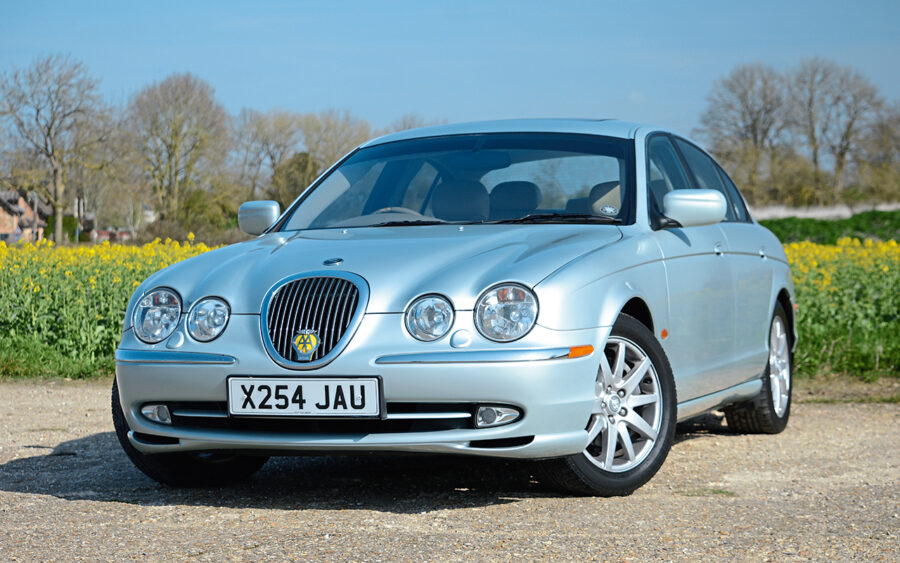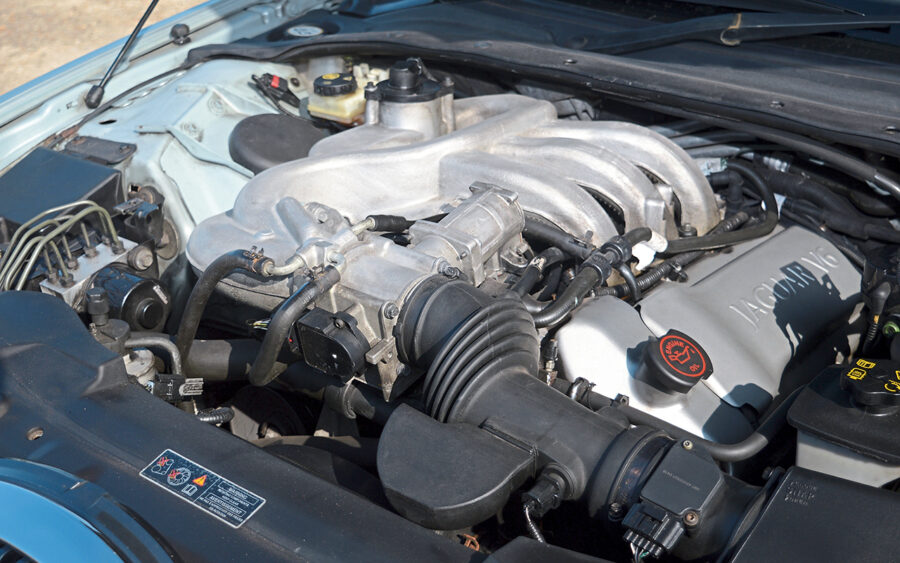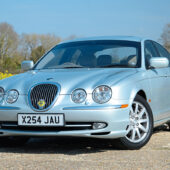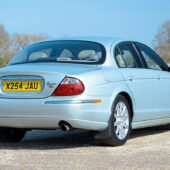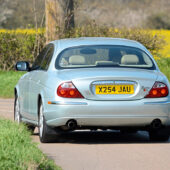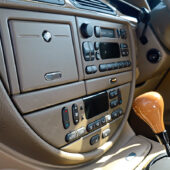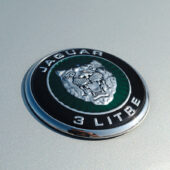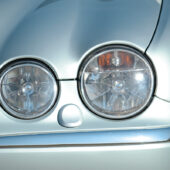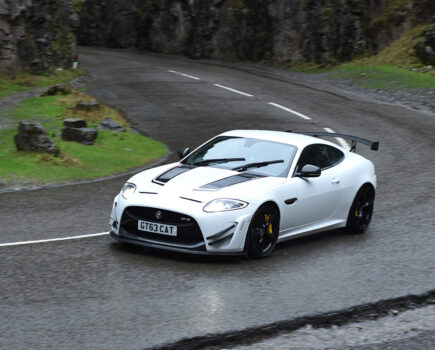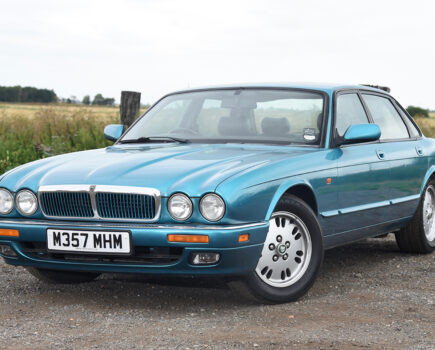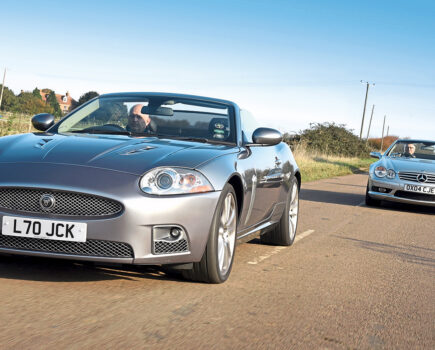The Jaguar S-Type is still an affordable prospect but values are on the up. Here’s how to buy a great example
Words: Paul Wager
As the number of cherished examples declines, the ‘X200’ S-Type is in danger of becoming a footnote in Jaguar history, yet it’s one of the most significant models from the brand’s modern history. Not only was the S-Type responsible for lifting Jaguar sales over the 100,000-per-year mark for the first time, but it also demonstrated the potential for the company with the resources of Ford behind it. The car was a genuine challenger for rivals including the E39-generation BMW 5 Series and the W210 Mercedes E-Class.
Yes, the retro styling puts the car firmly in the Marmite camp, but few will deny that under the curves was a state-of-the-art car and indeed the platform was continued into the Mk1 XF range. A good example still feels like a very modern car today and they’re currently something of a bargain too.
The S-Type is more commonly seen in either SE or Sport trim, but over its lifetime it was offered in a bewildering variety of trim levels. Initially, just standard and SE specification were offered on the V6 model, with V8 cars effectively being to SE spec. By 2005, the line-up included SE or Sport trim on the 2.5, 3.0, 2.7 diesel and 4.2 V8, with a standard option available only on the 2.5 V6 and 2.7 diesel. The S-Type R was offered in only one trim level.
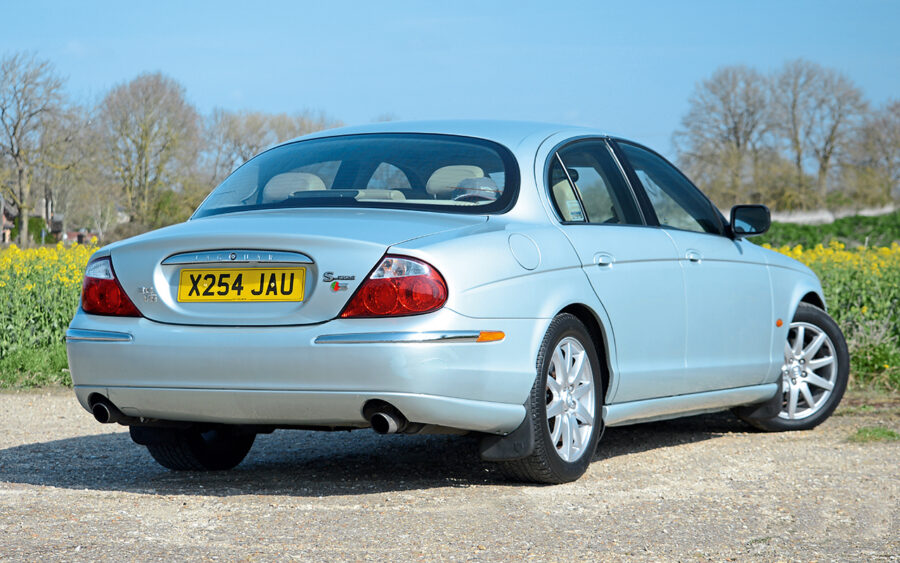
Bodywork
The S-Type may be a modern design but it can suffer badly from a very old-school issue: body rot, specifically in the sills. The difficulty for the buyer is that the plastic covers make it difficult to check, with even presentable-looking cars sometimes hiding significant rot so you’ll have to use your judgement here. The online MoT history will help.
It doesn’t have to be the end of the world though, since repair panels are available and if it’s caught early enough the work needn’t be too costly – with the bonus that the plastic covers can be popped back on to cover the repair neatly without a big paintwork cost. Having said that though, in extreme cases the rot will have spread beyond the outer panels to the inner sills and even the floors, meaning a big job involving much interior stripdown. It’s thought that post-2004 cars suffer less from the issue.
Less critical and more obvious rust issues can surface under the rear screen where water can collect under the sealing rubber, while the bumpers at both ends can rub against the bodywork, with rust setting in once the paint has been worn away. The same issue has also been known at the trailing edge of the rear doors.
Elsewhere, it’s common to see S-Types with cloudy headlight lenses which are a simple DIY fix using a polishing kit and a drill, while misted-up lamp units can be sorted by removing the bulbs and drying them out.
If the beam pattern of the non-HID lamps is poor and light output dire, check that the adjusters haven’t broken up. Like the X-Type, when this happens the bulb is no longer held in position, but it’s possible to use a heat gun and plenty of patience to split the lamp unit open and install new uprated adjusters before glueing it closed again with suitable mastic.
If the paintwork at the trailing edge of the bonnet is damaged, check the wiper arms for play and listen for a clonk during operation signifying wear in the linkage. A complete used assembly is often the cheapest solution.
Engine and transmission
The Ford-derived petrol V6s are generally reckoned to be robust units, with problems generally of the irritating rather than catastrophic nature: breather pipes can block, while cam cover and sump gaskets can perish, causing oil leaks.
The V8 is similarly reliable and will also suffer from cam cover gasket leaks. If the engine turns a few times before catching then suspect a failing MAP sensor, which again is an easy DIY replacement. Issues with the breather pipe at the throttle body can cause the ‘check engine’ light to come on, but the most common cause is a failed oxygen sensor.
The diesel engine needs more caution, especially on cars which have been driven gently or on lots of short journeys. On the pre-DPF models, the exhaust gas recirculation (EGR) valve can get clogged, while turbo failure isn’t unknown either. The MAF sensor can also fail. If the engine doesn’t idle smoothly, it may be a sign of injector issues, while the upper intercooler hose can also crack.
Engines with a particulate filter suffer from the same issues but also add DPF problems into the mix. Issues largely surround the regeneration, which doesn’t happen if the engine isn’t driven hard enough sufficiently often, but most specialists with the right software can get around the issue and manually force the regeneration. Remember, the MoT test now specifically requires a DPF unit to be present, so removing it isn’t an option.
Specialists also suggest the correct grade of oil is critical for the DPF engines, as is the correct level: don’t fill it quite up to the ‘max’ level on the dipstick, since a small amount of diesel may be added each time the DPF regenerates and this will avoid it rising above the maximum.
All the engines use a similar design of coolant header tank which can become brittle with age and fracture at the bleed pipe connection. A replacement part is a sensible pre-emptive solution.
The diesel also has a cam belt at the front and a second belt at the rear driving the fuel pump. The change intervals are 105,000 for the front belt, 150,000 for the rear one or 10 years but many cars will be due at least one belt change.
The catalytic converters on the diesel can also fracture around the flexible mesh section at the mounting flange but it’s possible to repair them by cutting off the broken elbow and fitting a repair piece available from Jaguar which is actually listed for the XF.
The five/six-speed manual box isn’t the lightest shift around but the units are pretty robust. The six-speed ZF automatic is a sealed-for-life design, but it’s accepted that an oil and filter change at around 70,000 miles will prolong its life. It’s one for a specialist workshop and at the same time it’s worth checking the plastic gearbox sump for warping and damage.
The automatic diesels use a gearbox oil cooler which shares the engine cooling system and if this fails, coolant can end up inside the box. Symptoms include juddering under load and if you’re lucky, you can catch it before the gearbox is ruined.
The differential can also leak oil around the driveshafts but the seals are easily replaced.

Suspension, steering and brakes
In most cases it’s a regular system with sliding single-piston calipers at the front and the biggest issue will be rusty steel brake pipes and seized calipers which are a DIY job to sort with an exchange unit.
The R uses four-piston Brembo calipers and they’re generally reliable, although if you do have problems new calipers are currently unavailable and used ones are less common, meaning it can be cost-effective to have the unit rebuilt, since pistons and seals remain available.
Perhaps the biggest issue with the brakes surrounds the ABS. A fault code for the front end will generally just be a wheel sensor which is a cheap DIY fix, but at the rear it can get more involved. The reluctor rings are part of the driveshaft and they can either become detached from the shaft or become damaged, sometimes as corrosion forces expansion. Various solutions have been offered involving essentially glueing new rings in place but the proper solution is to replace the driveshaft.
On cars with the electronic handbrake in theory a diagnostic system is required to set the unit to the service position for a pad change but this can be achieved by holding down the button while turning off the ignition to ensure the brake remains off. To retract the caliper piston you’ll need the proper tool to rotate it as you push it back.
Low-speed clonks and rattles are often caused by worn anti-roll bar bushes, while woolly handling and uneven tyre wear can be down to wear in the lower mounting bush for the front strut.
Worn bushes in the front reaction arms can be felt at low speed stop-starts and can also cause a shimmy when braking. The nearside bush can deteriorate on diesel models when oil drips on to it from a fractured intercooler pipe.
At the rear, poor handling can be caused by worn bushes in upper and lower arms.
A noisy steering column can often be cured by greasing the brass bushes inside the footwell.

Interior, trim and electrics
Window regulators that are slow or make a grinding noise will be on their last legs as the cables can fray and jam in the mechanism. Replace them with a used part before the cable snaps. Door latch mechanisms can also fail, causing the central locking to fail.
If the heater only offers maximum hot or cold with nothing between, suspect the heater valve in the cooling system. A loud ticking noise from behind the dash at idle can point to faulty air mix motors.
Jaguar S-Type: our verdict
There’s plenty to like about a good Jaguar S-Type, with plenty of scope for securing a slice of wood-and-leather luxury on a budget. The car’s distinctive styling may not be to everyone’s taste but we reckon its aged well – much like its X-Type sibling.
You’ll find S-Types at well under £1000 but they’ll definitely fall into the project category. Presentable cars with long MoTs start at around £1500, most of them petrol V6 automatics which at this price level make more sense than tired, miley diesels. Move up to the £2000 mark and diesels with more sensible mileage around the 100,000 mark start to appear.
At this price level it’s still a mixed bag although many will be surprisingly respectable, but at the £2500-£3000 mark there’s a huge choice of colour and spec. Top whack for exceptionally low mileage examples is around £7000.
The regular V8 starts at around £3000, but the supercharged S-Type R is a different market entirely with prices starting at £5500.

